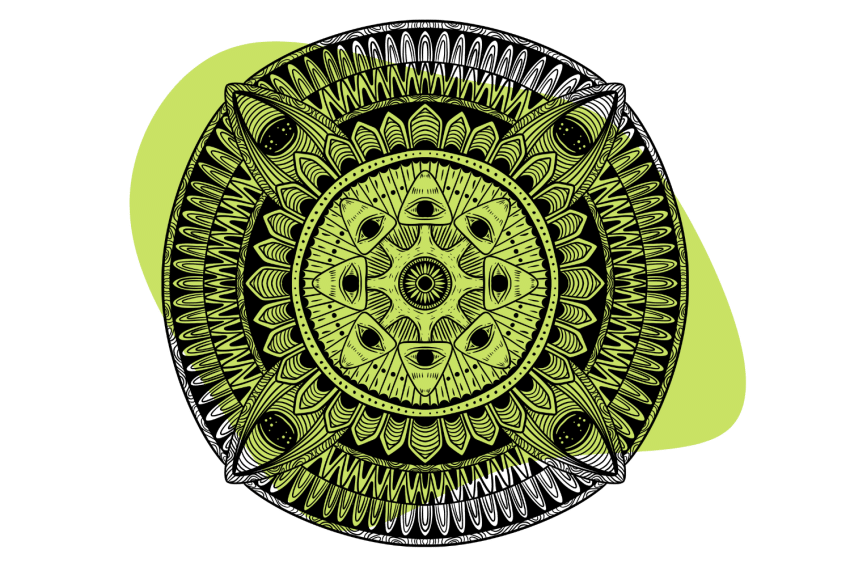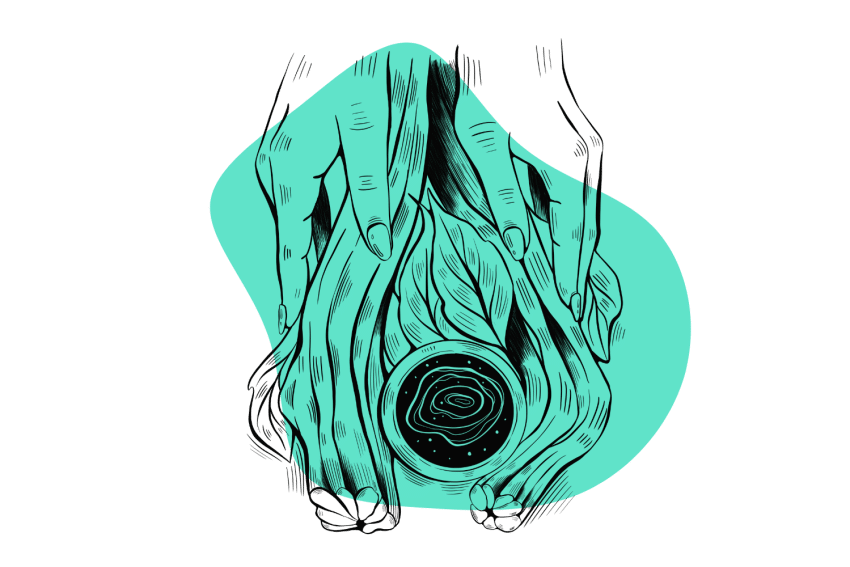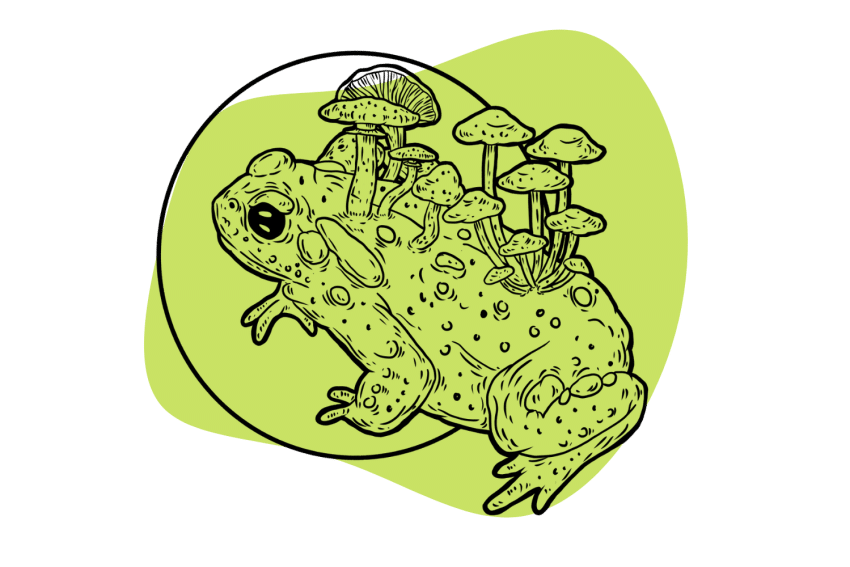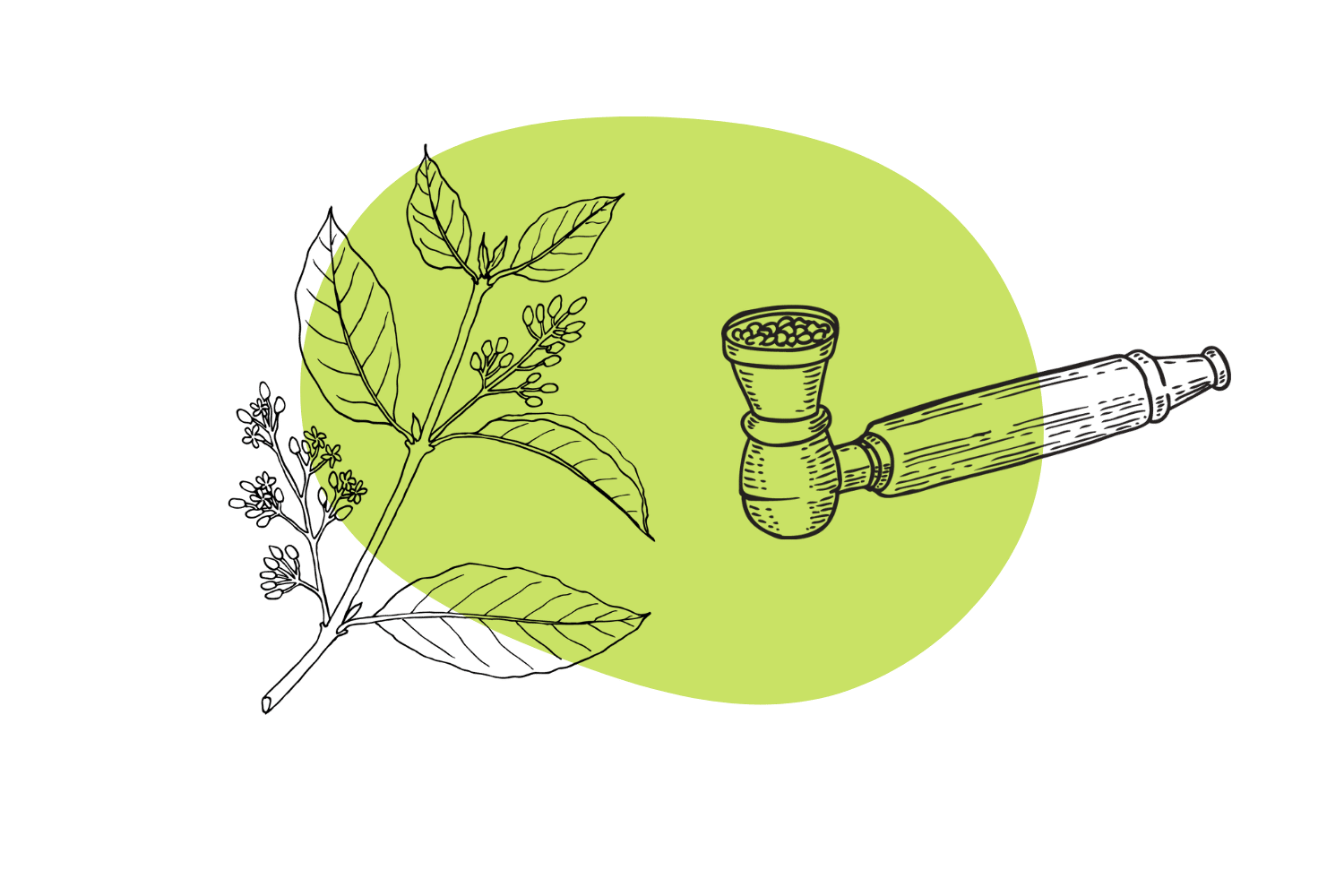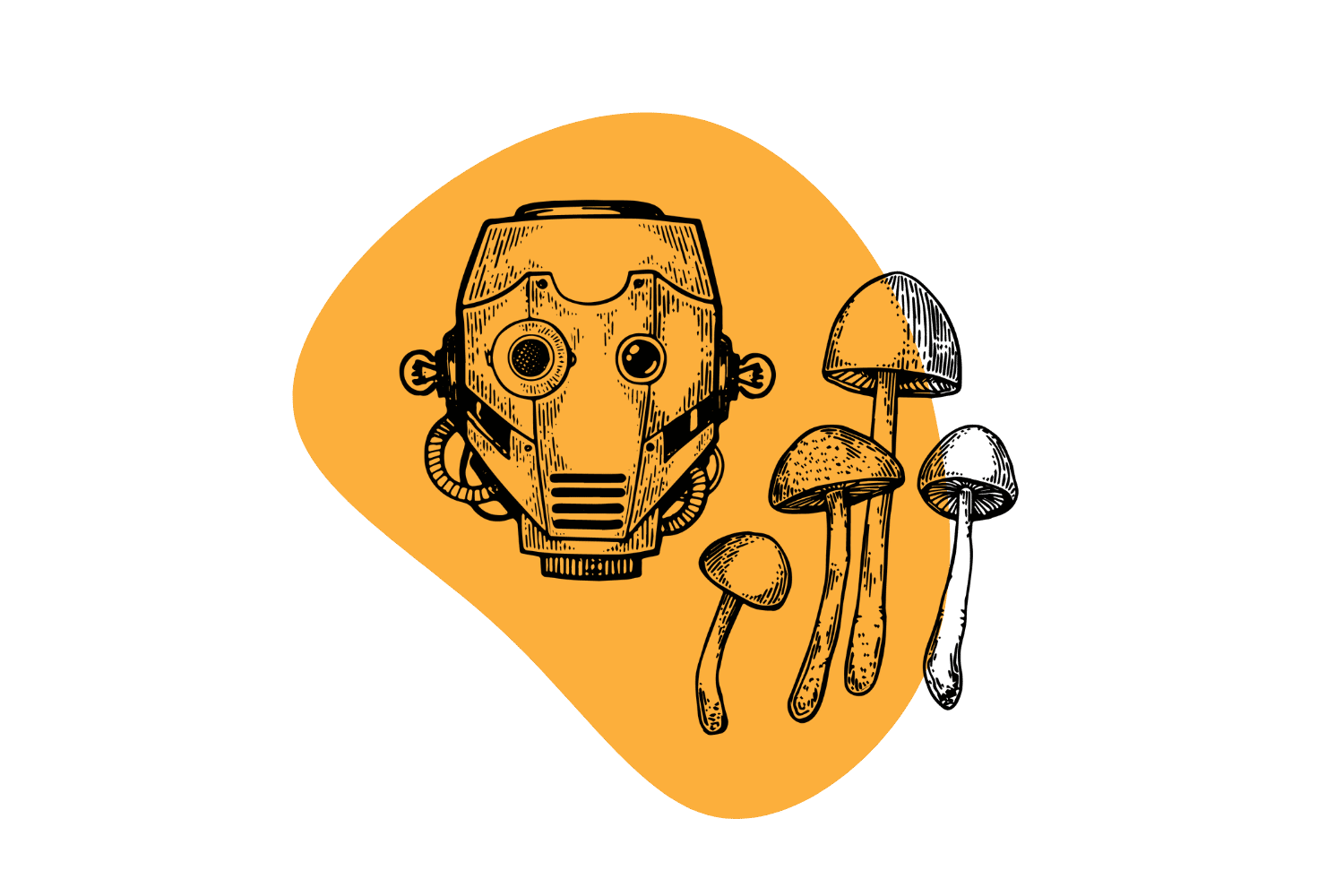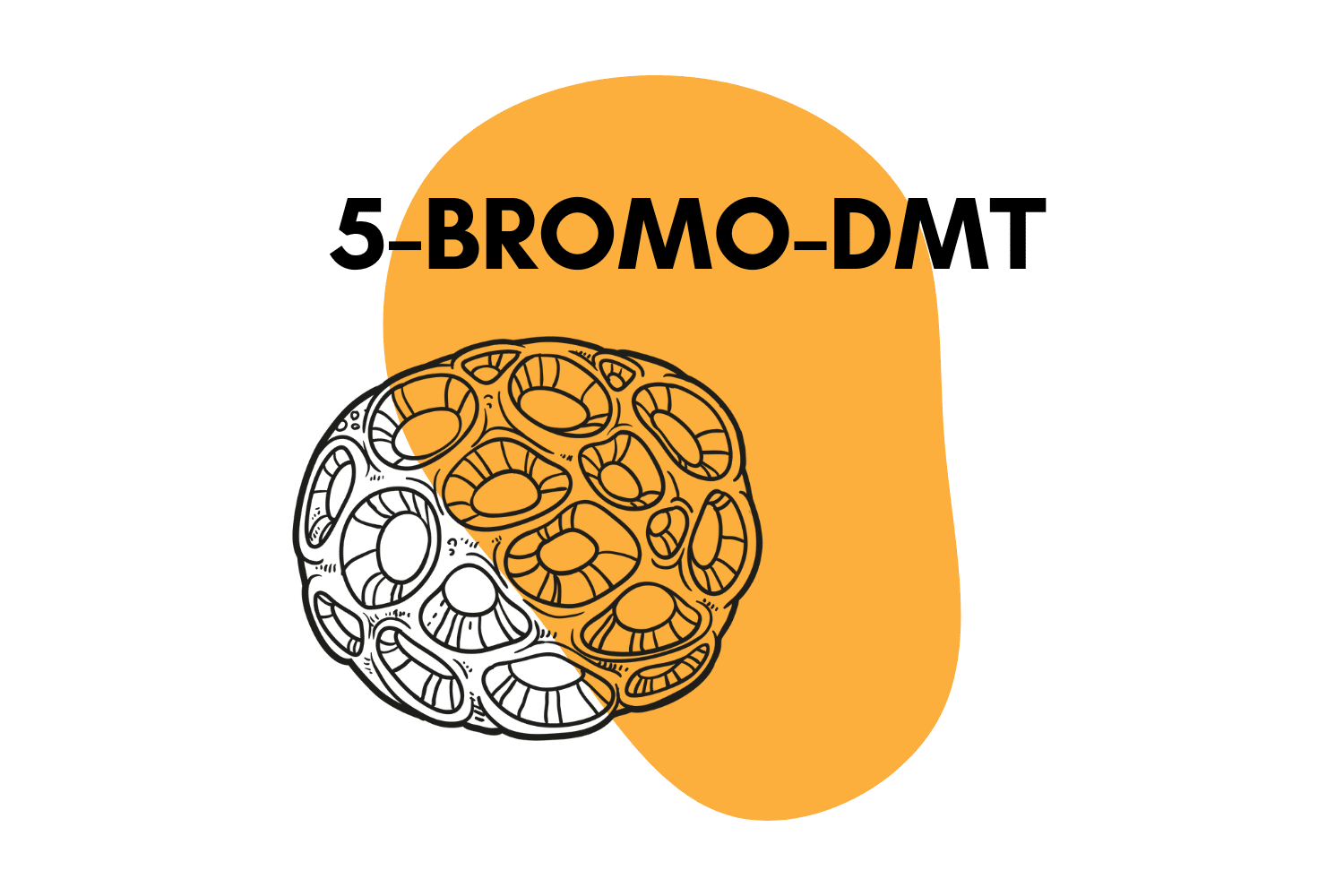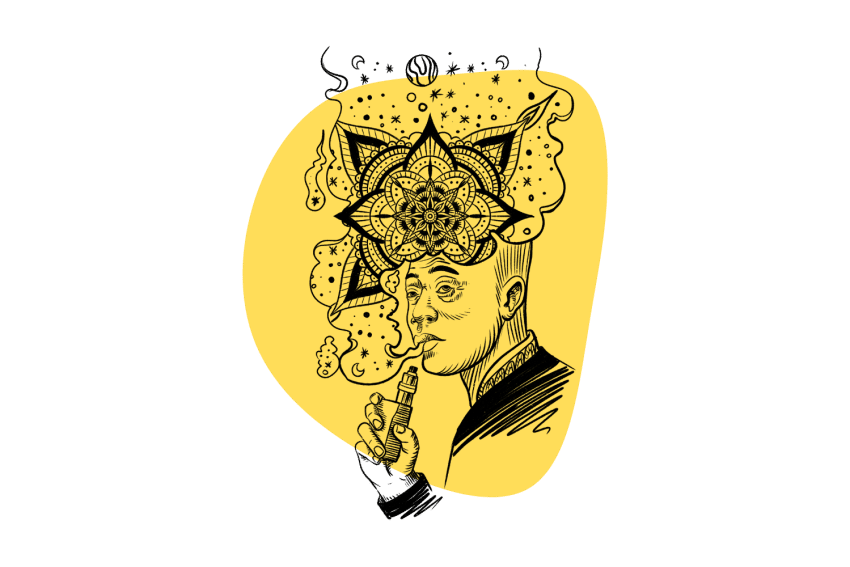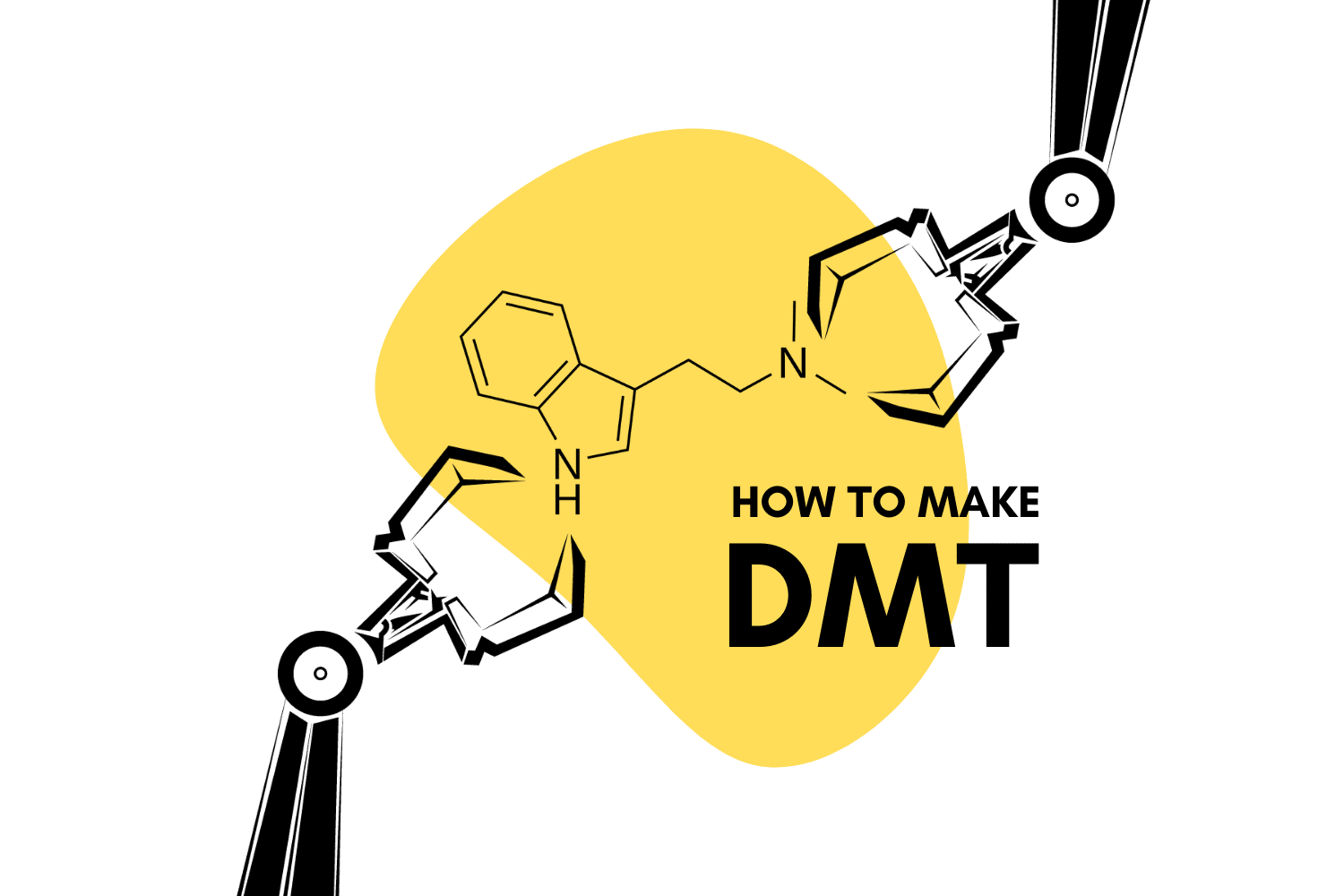List of Plants That Contain DMT
DMT is surprisingly common in nature. Here are a few notable examples.
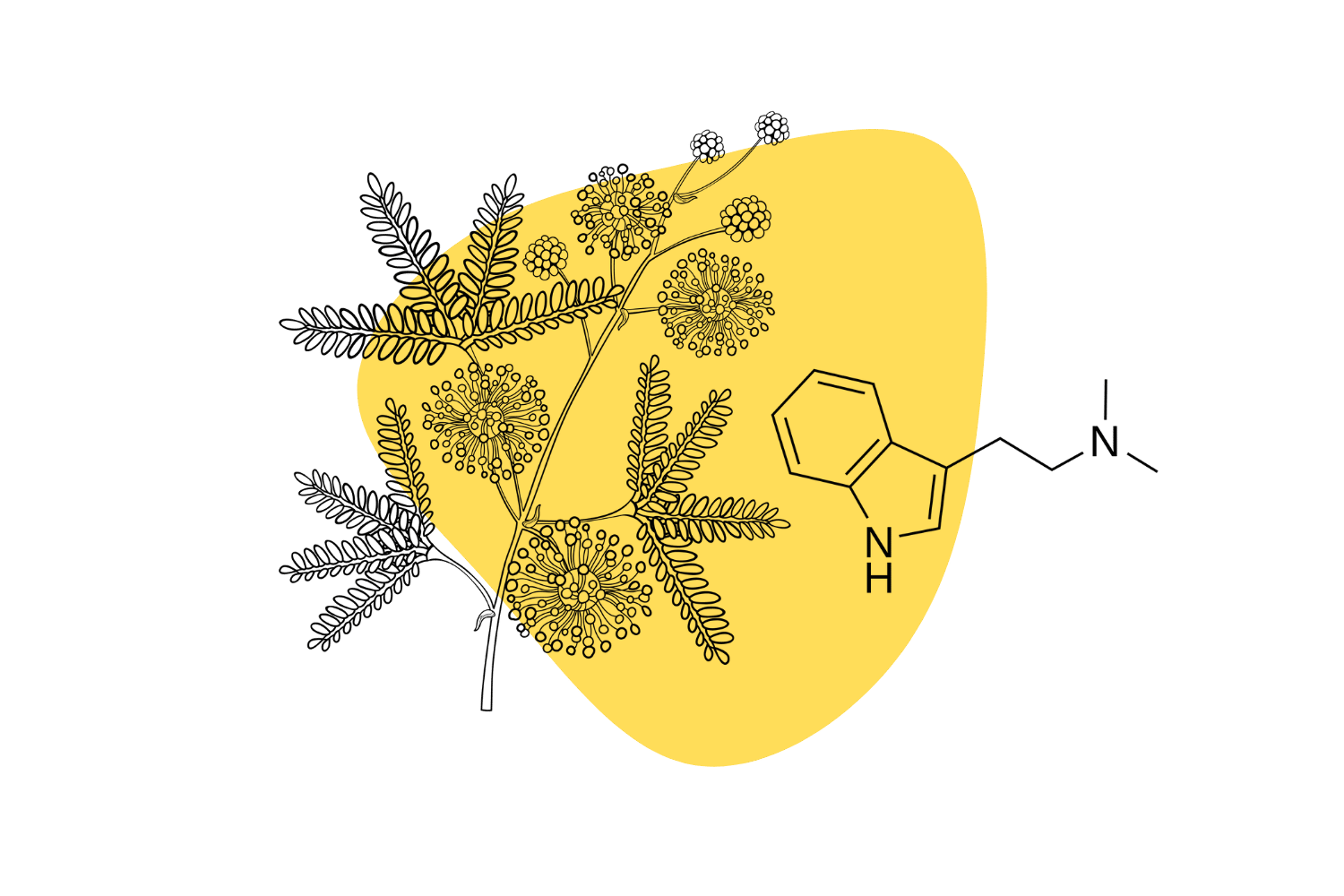
DMT (dimethyltryptamine) is one of the strongest psychedelic substances on Earth. Just a few milligrams is strong enough to blast your entire consciousness into another dimension — sometimes referred to as DMT hyperspace.
DMT is surprisingly common in nature. It’s found in various plants, animals, and even a few species of sea sponges. This psychedelic is even produced in the human brain (albeit in very low concentrations).
Here, we’ll explore 18 plants that produce notable concentrations of N,N,DMT, and 5-MeO-DMT. We’ll also cover how to use these plants to extract DMT yourself and other uses like changa or ayahuasca.
Let’s dig in.
How Common is DMT in Plants?
Thousands of plant species produce DMT — even citrus fruit rinds contain some [1]. However, only a few plants contain DMT in doses high enough to be psychoactive.
The reason we don’t blast off every time we eat a lemon because our body is good at breaking DMT down before it takes effect. DMT only becomes psychoactive when we smoke, snort, or mix it with other plants that prevent the body from breaking it down (mainly the harmala alkaloids or other MAO inhibitors).
Most plants produce a combination of N,N,DMT, 5-MeO-DMT, and 5-HO-DMT (bufotenin). The ratio of these primary sources of DMT will vary depending on the species, as well as environmental conditions and the time of year the plant was harvested.
Plant Families That Contain DMT
DMT is more common in certain families or genera of plants than others.
The pea family (Fabaceae) is home to the most ambitious of the DMT-containing plants. This includes genus’ including Mimosa, Acacia, Petalostylis, Desmodium, Mucuna, and Lespedeza — just to name a few.
The other most predominant family of herbs that take the time to make DMT is the nutmeg family (Myristicaceae). Notable DMT-containing members of this family include Horsfieldia and Virola. Nutmeg itself is psychedelic too, but not because of its DMT concentration. This herb relies on a psychoactive terpene called myristicin instead.
Other notable plant genera’ that produce DMT include Phalaris, Delosperma, and Psychotria.
Let’s cover each of these DMT-containing plants in more detail (along with a few others).
1. Acacia spp.
The acacia genus contains around 160 different species — most of which are found in Australia and Africa. They’re members of the pea family (Fabaceae), which makes them close relatives of other DMT-containing genera including mimosa and desmanthus.
Acacia trees are a rich plant source of DMT. Dozens of species have been confirmed to contain a combination of N,N,DMT, 5-MeO-DMT, bufotenin, and related tryptamine alkaloids.
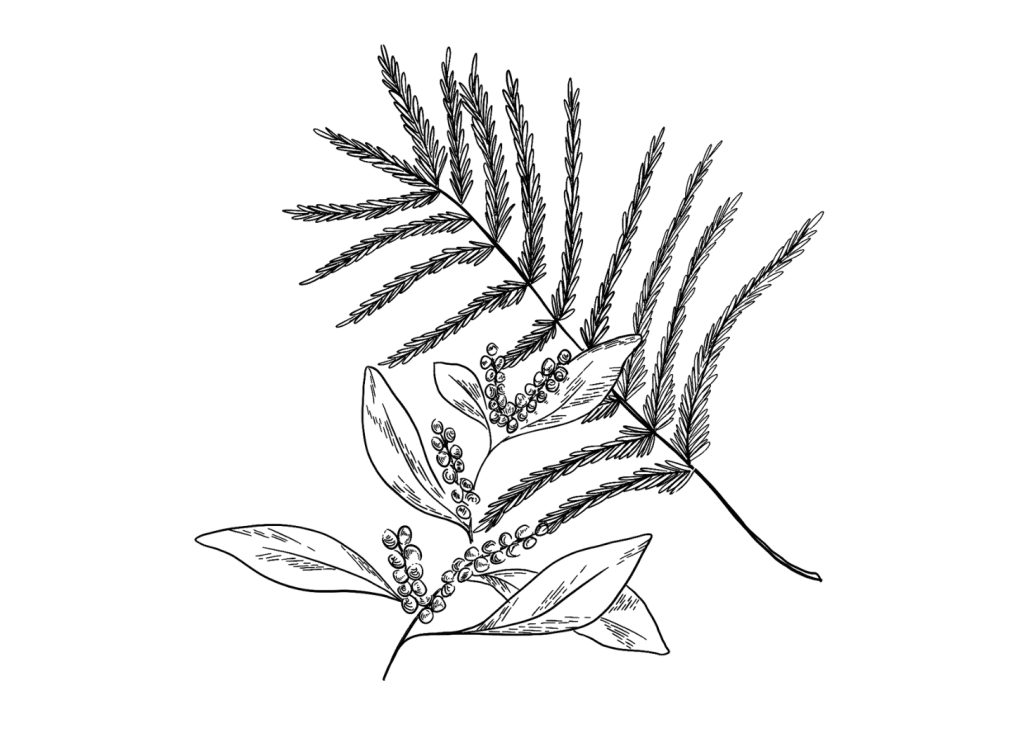
Some species, such as Acacia berlandieri contain other psychoactive alkaloids too, including mescaline, amphetamines, and nicotine.
The bark and leaves contain the most DMT, which is used to prepare formulations such as changa or ayahuasca. Acacia species are also an excellent source for extracting DMT.
Mexican acacia (Acacia angustifolia) was used by the Aztecs in the form of a tincture for mild psychoactive effects.
West African acacia (Acacia campylacantha) was fermented in beer to provide mild to moderate psychoactive effects as well.
In parts of Southeast Asia, the resin of the catechu tree (Acacia catechu) is one of the primary ingredients in betel quid — a psychoactive mixture made up of several species of psychoactive plants.
Acacia trees that have been confirmed to contain DMT include:
- Acacia acuminata
- Acacia alpina
- Acacia angustifolia
- Acacia angustissima
- Acacia auriculiformis
- Acacia baileyana
- Acacia berlandieri
- Acacia catechu
- Acacia caven
- Acacia cole
- Acacia complanata
- Acacia confusa
- Acacia confusa
- Acacia constricta
- Acacia cornigera
- Acacia cultriformis
- Acacia drepanolobium
- Acacia farnesiana
- Acacia filiciana
- Acacia floribunda
- Acacia georginae — contains toxic compounds too avoid this species
- Acacia greggii
- Acacia harpophylla
- Acacia implexa
- Acacia karroo
- Acacia kempeana
- Acacia kettlewelliae
- Acacia laeta
- Acacia longifolia
- Acacia macradenia
- Acacia maidenii
- Acacia mangium
- Acacia melanoxylon
- Acacia mellifera
- Acacia nilotica
- Acacia phlebophylla
- Acacia podalyriaefolia
- Acacia polyacantha
- Acacia retinodes
- Acacia rigidula
- Acacia roemeriana
- Acacia salicina
- Acacia schottii
- Acacia senegal
- Acacia sieberiana
- Acacia simplex
- Acacia tortilis
- Acacia vestita
2. Yopo (Anadenanthera spp.)
Yopo (also called Yopo, Jopo, or Cohoba) is a tropical tree species found throughout the Amazon and parts of the Caribbean.
The beans of the yopo tree contain relatively high concentrations of bufotenin (7.4%) and related tryptamine alkaloids, including 5-MeO-DMT (0.04%) and N,N,DMT (0.16%) [3].
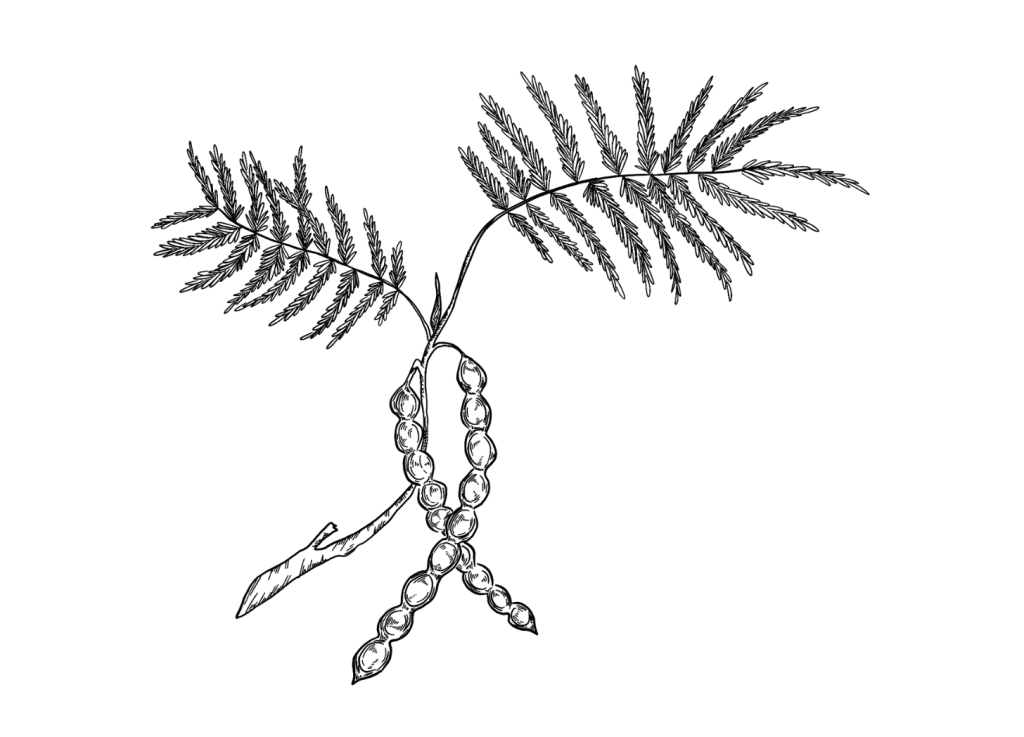
This tree has a long history of use as a psychedelic. The most common form of administration is to powder the beans and insufflate them through the nose. Most commonly, someone will blow the snuff through a hollowed out piece of bamboo directly into another person’s nose. This allows more yopo to enter the nasal cavity than snorting the powder alone.
The process is painful but produces powerful psychedelic effects. The experience is short-lived, lasting just a few minutes. Some tribes will combine the Banisteriopsis caapi (ayahuasca) vine into the mix as well to prolong the effects.
Related DMT-containing species include Anadenanthera macrocarpa and Anadenanthera peregrina.
3. Giant River Reed (Arundo donax)
Arundo donax is a species of cane found throughout the Middle East, California, the Caribbean, and the islands of the West Pacific.
Depending on the region, this plant goes by many common names; just a few examples include giant cane, elephant grass, carrizo, arundo, Spanish cane, Colorado river reed, and wild cane.
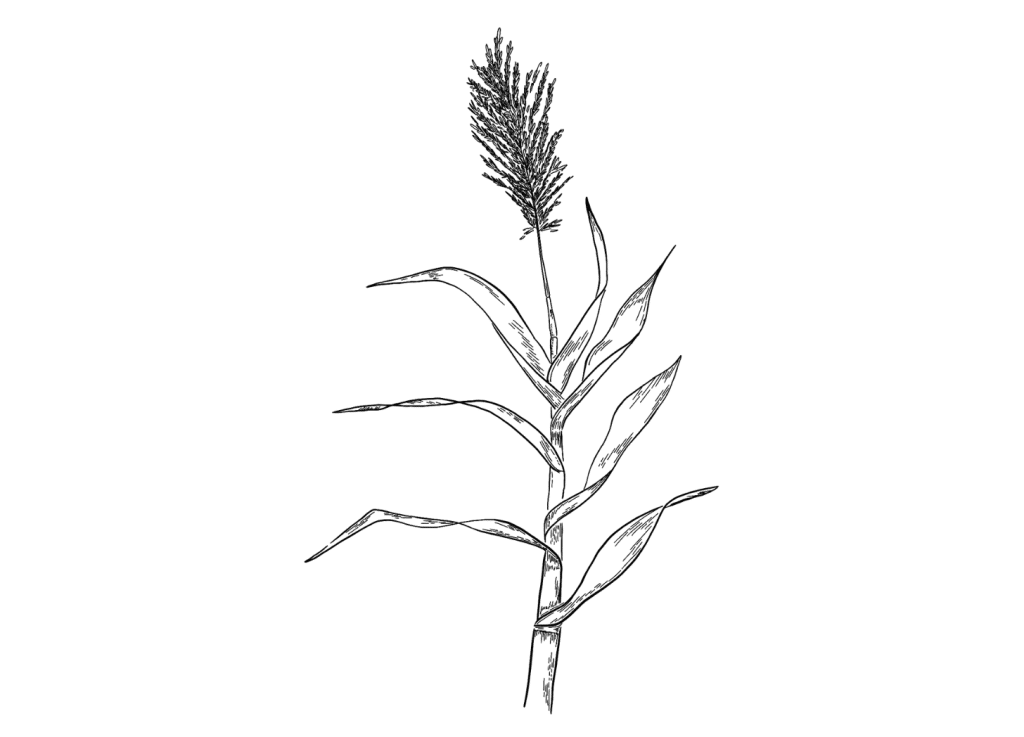
As the name implies, this reed is very large — stretching itself up to 10 meters high in optimal conditions. Its fast growth and tolerability to hot climates makes it an attractive option for carbon sequestration and improving degraded soils. It also contains high concentrations of isoprene — which is the precursor for terpenes and synthetic rubbers, and plastics.
The whole plant contains a pharmacy of tryptamines, including N,N,DMT (0.0057%), 5-MeO-MMT (0.0023%), 5-MeO-NMT, and bufotenine (0.026%).
4. Bundleflower (Desmanthus illinoensis)
Many members of the desmanthus genus contain DMT and related tryptamine alkaloids. The bundleflower (Desmanthus illinoensis) contains the highest concentration of N,N,DMT at around 0.34% in the root bark.
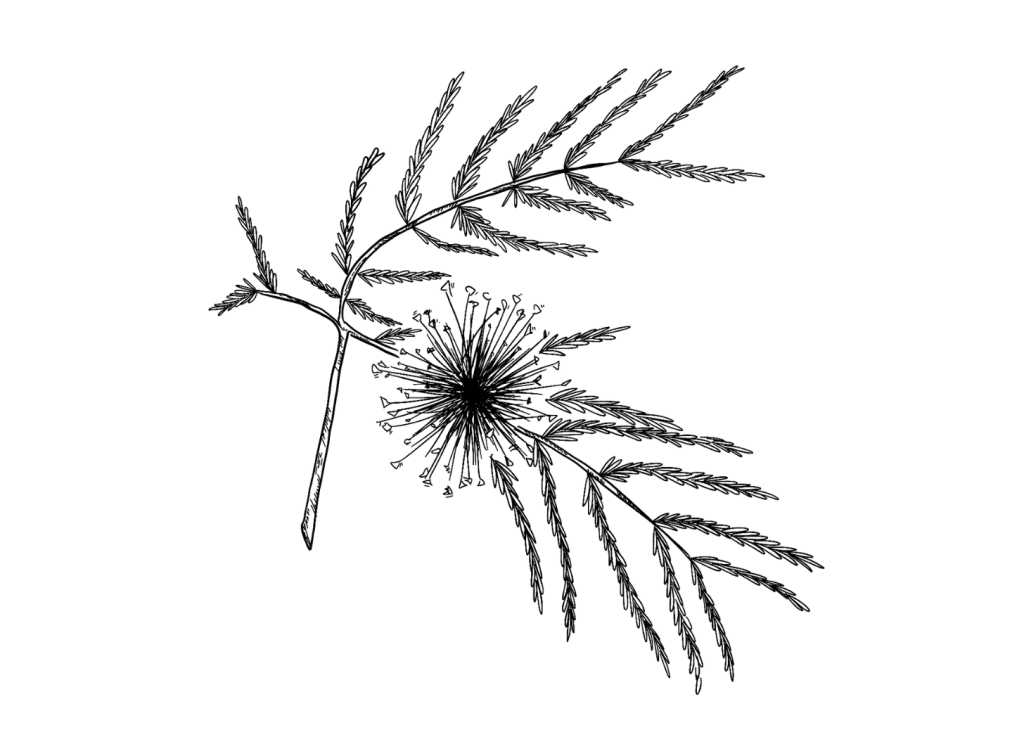
This species can be found throughout the Eastern United States and is particularly common in Florida, Texas, North Dakota, and Pennsylvania. Other members of the desmanthus genus can be found in Mexico, Central and South America, and Australia.
This genus is a member of the Fabaceae family of plants — which includes other DMT-containing species, including acacia and mimosa.
5. Chagro-Panga (Diplopterys cabrerana)
Diplopterys cabrerana is an Amazonian vine sometimes used as an alternative to chacruna for making ayahuasca. It contains high concentrations of N,N,DMT (1.3%), and trace amounts of 5-MeO-DMT and other tryptamine alkaloids, including bufotenin and methyltryptamine.
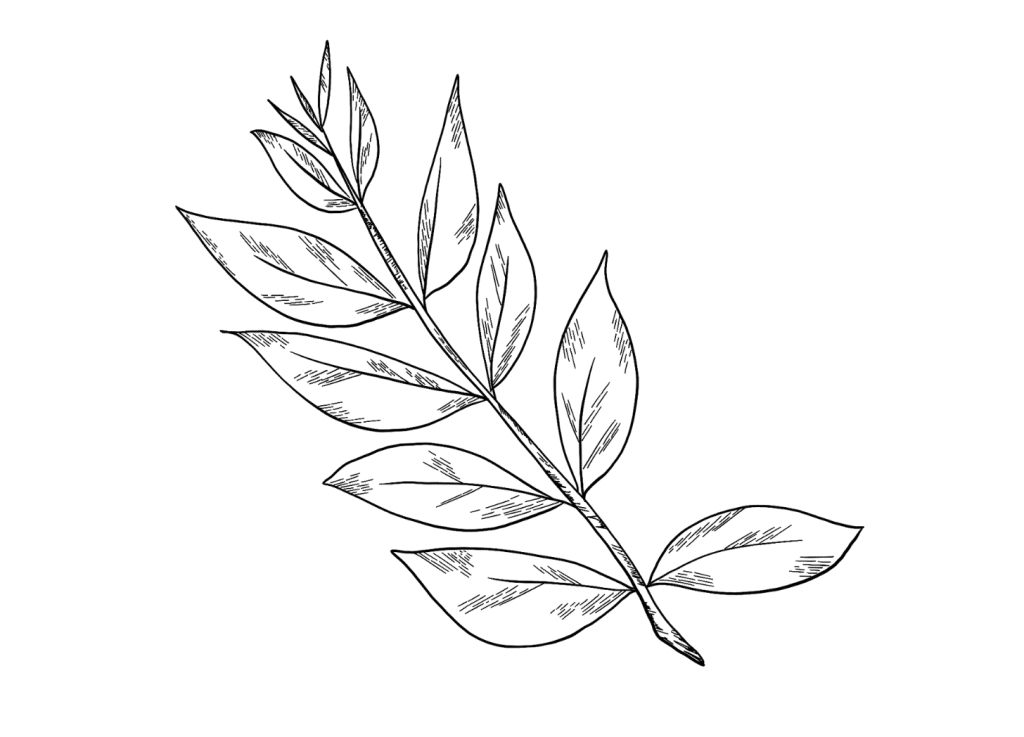
The leaves of the plant also contain trace amounts of beta-carboline — which is a common MAO inhibitor used to activate the DMT in plants. There isn’t enough beta-carboline for this plant to be psychoactive on its own without a stronger MAO inhibitor such as the ayahuasca vine.
This herb is a popular ingredient in homemade changa as well as for DIY DMT extraction.
6. Jurema (Mimosa spp.)
Mimosa is a large genus of plants in the Fabaceae family. There are more than 400 species in this genus, many of which contain notable quantities of DMT.
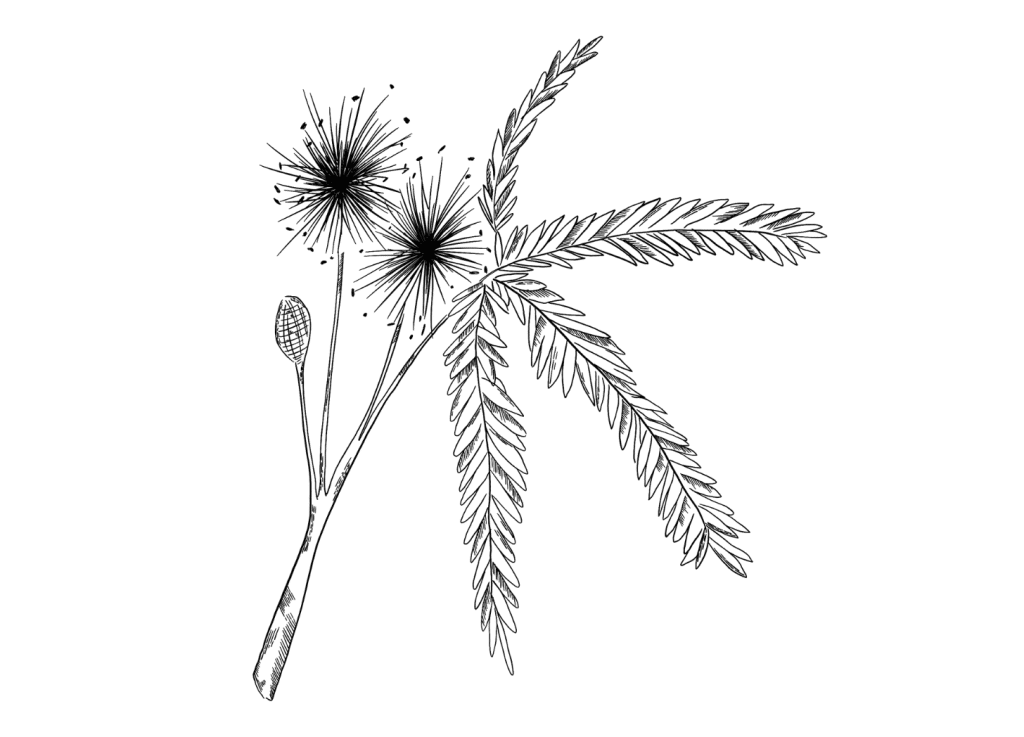
By far, the most common species used for making ayahuasca or extracting DMT are Mimosa hostilis and Mimosa pudica. The root bark of Mimosa hostilis (formerly Mimosa tenuiflora) contains roughly 1.7% N,N,DMT by dried weight. The stem bark also contains DMT, but in much lower concentrations (0.3%).
This plant is one of the most common sources used for DIY DMT extraction because of its widespread availability, high level of safety, and rapid growth.
DMT-containing species of mimosa:
- Mimosa hostilis
- Mimosa pudica
- Mimosa ophthalmocentra
- Mimosa scabrella
- Mimosa verrucosa
7. Chacruna (Psychotria viridis)
Chacruna is a member of the coffee family (Rubiaceae). It can be found throughout the Amazon rainforest and is also cultivated by local farmers for its use in ayahuasca.
Any DMT-containing plant can be used in combination with the ayahuasca vine to make the ayahuasca brew — by chacruna is by far the most common species used.
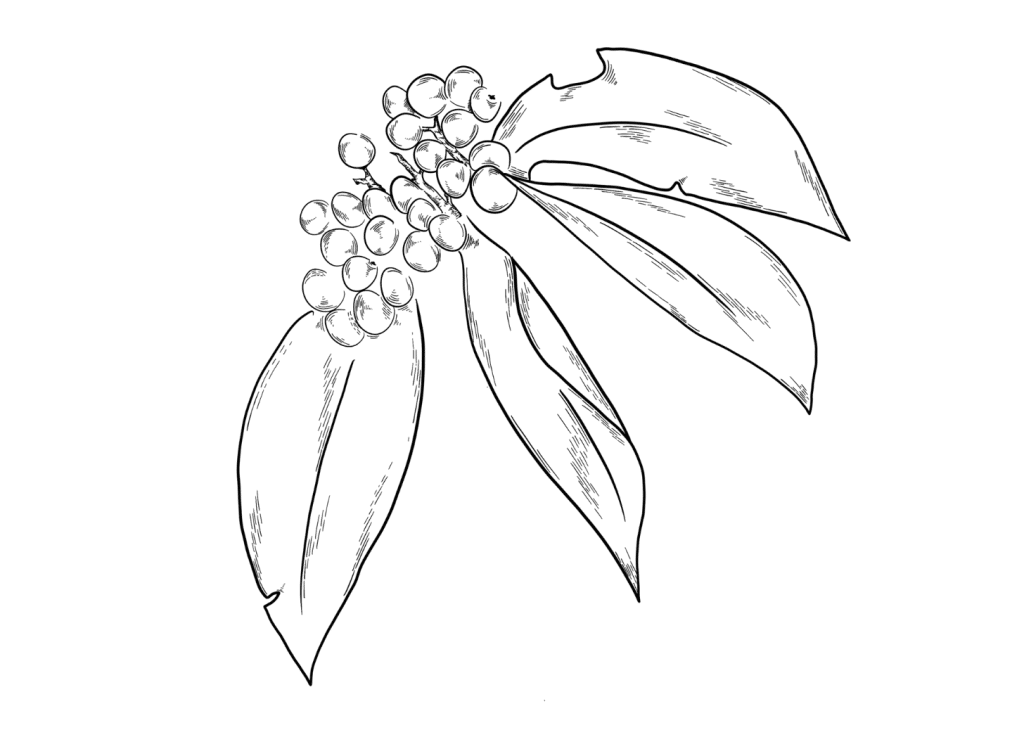
The leaves of chacruna contain anywhere from 0.1% to 0.6% N,N,DMT by dried weight.
A closely related species found primarily in Ecuador is Psychotria carthaginensis — which is also used as a source of DMT when making ayahuasca.
8. Epeña (Virola spp.)
Virola is a genus of trees related to nutmeg (Myristica fragrans). The leaves, bark, roots, and flowers of this tree contain varying amounts of N,N,DMT, and 5-MeO-DMT.
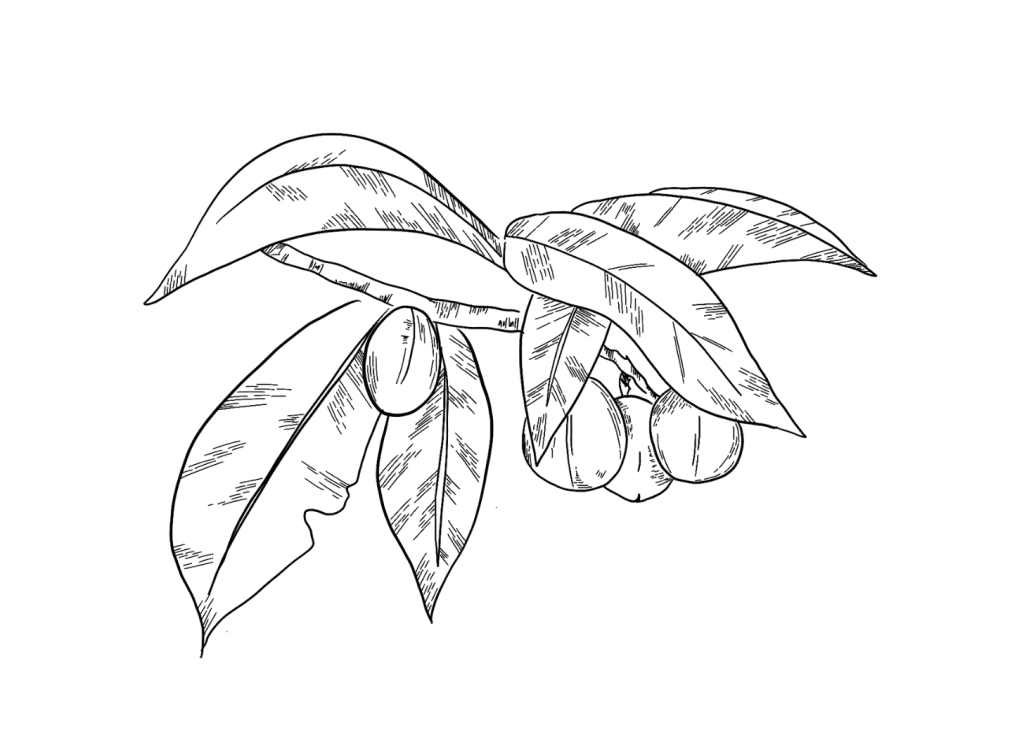
The powdered resin of virola species is insufflated as an entheogen by various indigenous Amazonian tribes — such as the Yanomami. It’s used in a similar context to yopo and is sometimes used as an alternative for making ayahuasca.
Virola species that contain DMT:
- Virola calophylla
- Virola carinata
- Virola divergens
- Virola elongata
- Virola melinonii
- Virola multinervia
- Virola pavonis
- Virola peruviana
- Virola rufula
- Virola sebifera
- Virola theiodora
- Virola venosa
9. Bulbous Canary Grass (Phalaris aquatica)
Phalaris is a species of grass found on every continent except Antarctica. This genus is incredibly diverse — found in virtually any landscape. Phalaris aquatica prefers marshy wetlands and is an invasive species in many parts of the world.
Various species of phalaris contain tryptamine alkaloids such as N,N-DMT (0.1%), 5-MeO-DMT (0.2%), and bufotenin (0.005%).
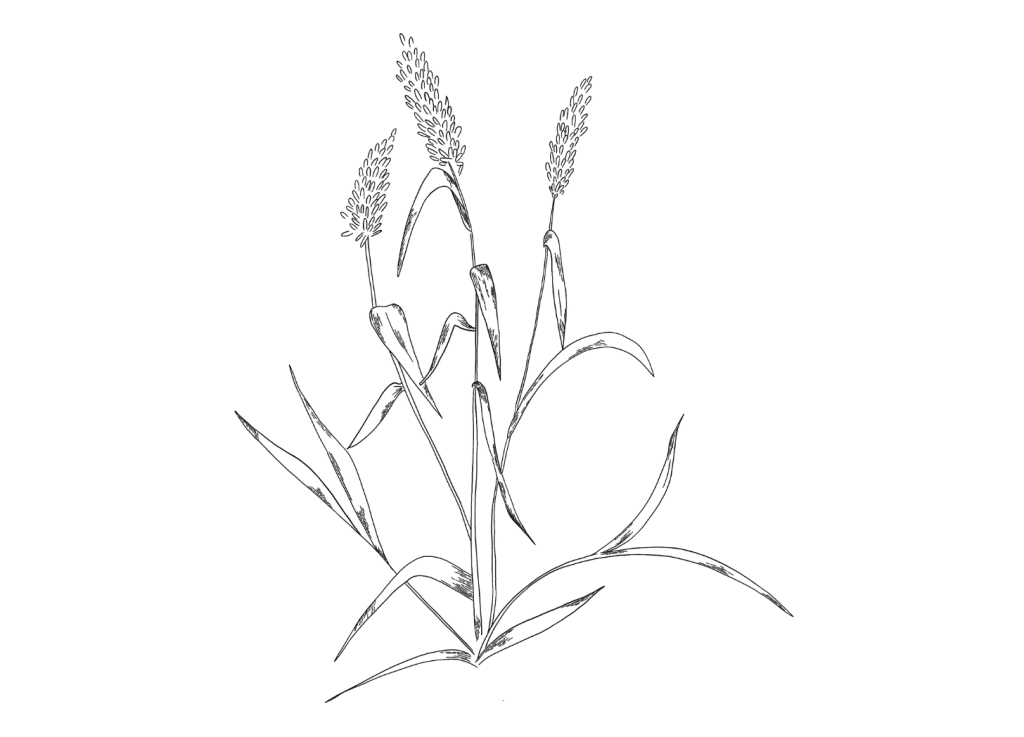
Animals that graze on phalaris plants with especially high concentrations of alkaloids develop a condition called “phalaris staggers” — which causes the animal to experience tremors, loss of coordination, and potentially death.
This species is not considered a safe alternative to other DMT-containing plants for the purpose of making ayahuasca or extracting DMT.
Other phalaris species that contain DMT:
- Phalaris arundinacea (0.12%)
- Phalaris tuberosa (0.02% )
10. Common Reed (Phragmites australis)
This wetland species of reed grows up to 6 meters tall and can spread laterally nearly 5 meters per year. It’s tolerant to droughts, brackish water, and high temperatures. These characteristics allow the common reed to flourish in just about any wetland bogs it manages to sink its roots into.
While this plant can be invasive and notoriously hard to eliminate from wetlands or bogs, it has many uses. It’s commonly used as a roofing material, it’s a solid source of cellulose, it can be eaten as food, the hollow stems are used as eco-friendly drinking straws, and the plant can be used in phytoremediation for cleaning contaminated water basins.
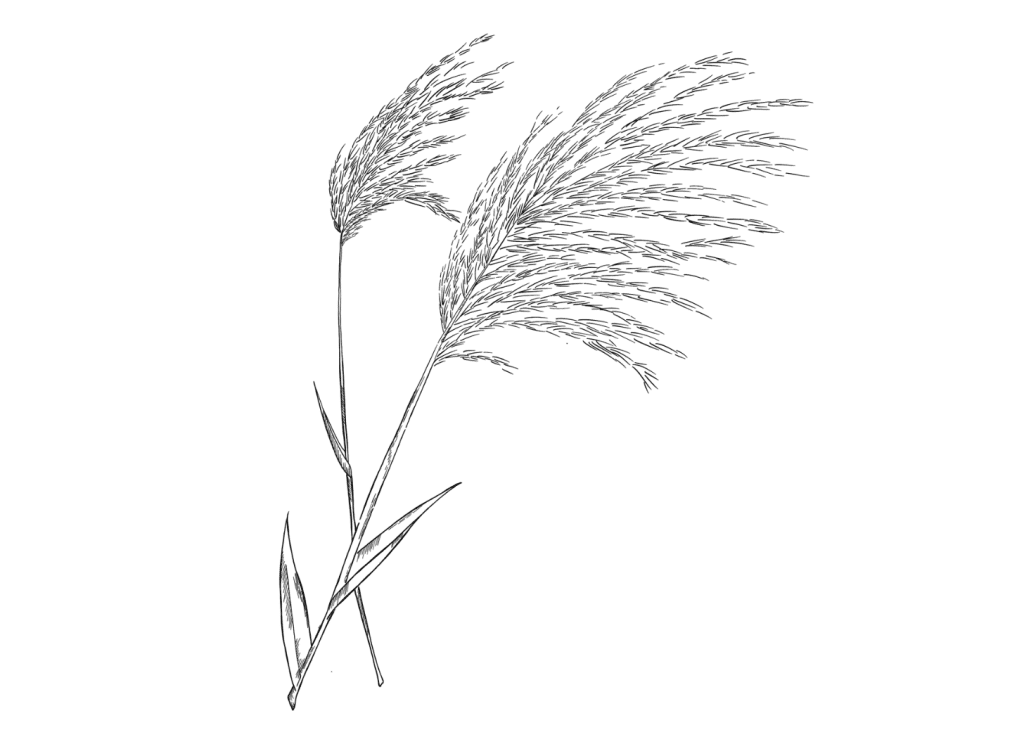
All parts of this plant contain modest concentrations of N,N,DMT, 5-MeO-DMT, and bufotenin.
This reed is sometimes mistaken for other DMT-containing grasses and reeds, such as Arundo donax and Phalaris aquatica.
11. Delosperma spp.
Delosperma is a genus of drought-resistant succulents with brightly colored, long-lasting flowers. They’re found abundantly in South Africa and are a popular garden variety in other hot, arid parts of the world.
The leaves of delosperma contain both N,N,DMT and 5-MeO-DMT, which shift throughout the year. N,N,DMT content is higher in plants harvested in the winter, while 5-MeO-DMT concentrations are highest in the summer.
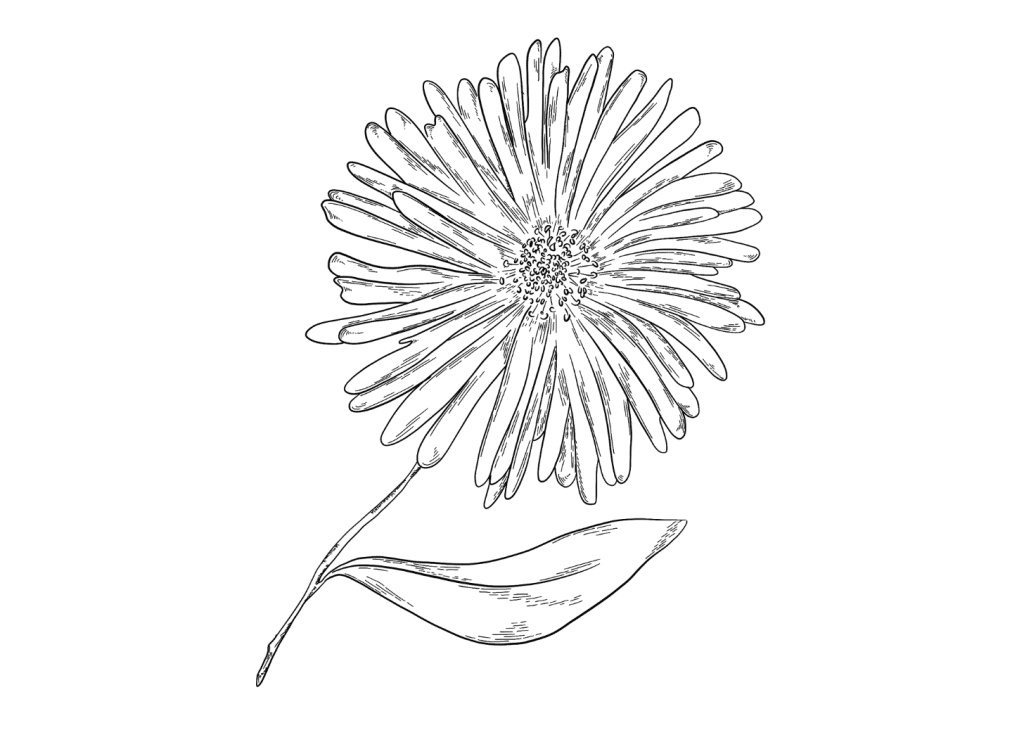
Species of delosperma that contain DMT:
- Delosperma acuminatum
- Delosperma cooperi
- Delosperma ecklonis
- Delosperma esterhuyseniae
- Delosperma hallii
- Delosperma harazianum
- Delosperma hirtum
- Delosperma lydenbergense
- Delosperma nubigenum
- Delosperma pageanum
- Delosperma pergamentaceum
- Delosperma tradescantioides
12. Desmodium spp.
Desmodium is a genus consisting of about 25 species in the Fabaceae (pea) family. This family is notorious for its DMT-rich species, including acacia and mimosa.
There are several species of desmodium that contain DMT, including D. caudatum. D. gangeticum, D. gyrans, and others. Several DMT-containing desmodium species have been moved to other taxonomic groupings, such as Phyllodium pulchellum, which contains N,N,DMT, 5-MeO-DMT, and bufotenin.
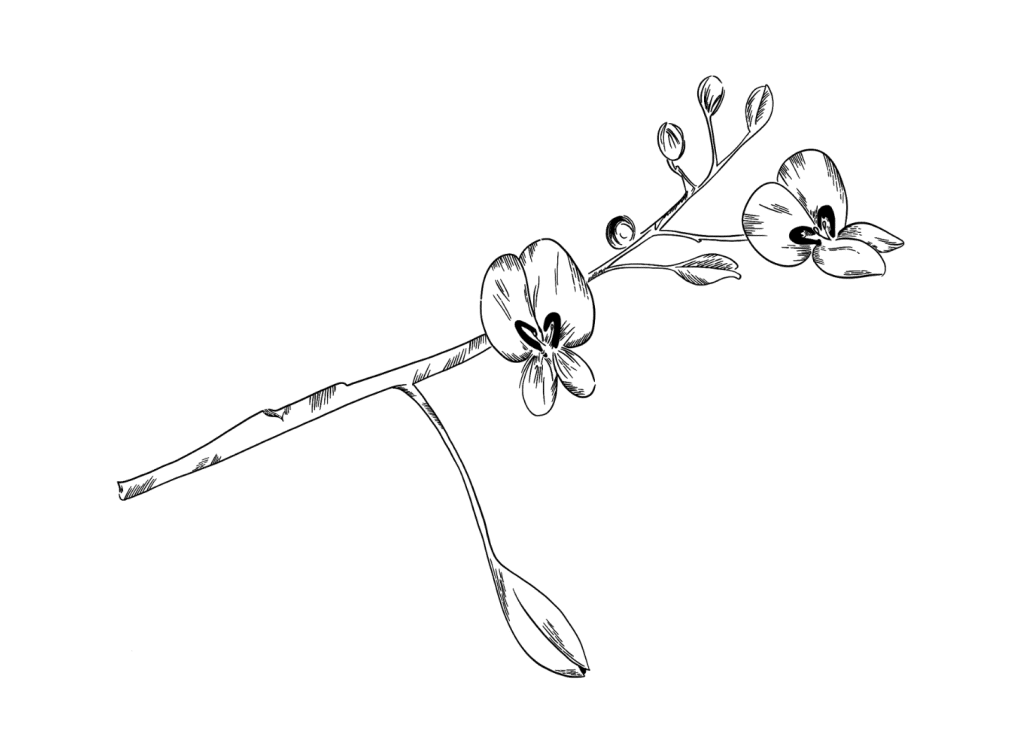
Some research suggests the species, Desmodium gangeticum has the highest concentration of DMT of the genus — with around 0.057% N,N,DMT by dried weight. The roots and leaves are used to extract DMT, but only plants that are two years old or older contain any detectable concentrations of DMT.
Species of desmodium that contain DMT:
- Desmodium caudatum
- Desmodium gangeticum
- Desmodium gyrans
- Desmodium pulchellum
- Desmodium racemosum
- Desmodium triflorum
13. Shrubby Bushclover (Lespedeza bicolor)
Lespedeza bicolor is a small shrub found throughout Asia. It’s often used as an ornamental garden variety. It’s fast-growing but doesn’t overcrowd neighboring plants.
This is a common herb in the Eastern United States, where it was used to regenerate land destroyed by mining or other industrial activities.
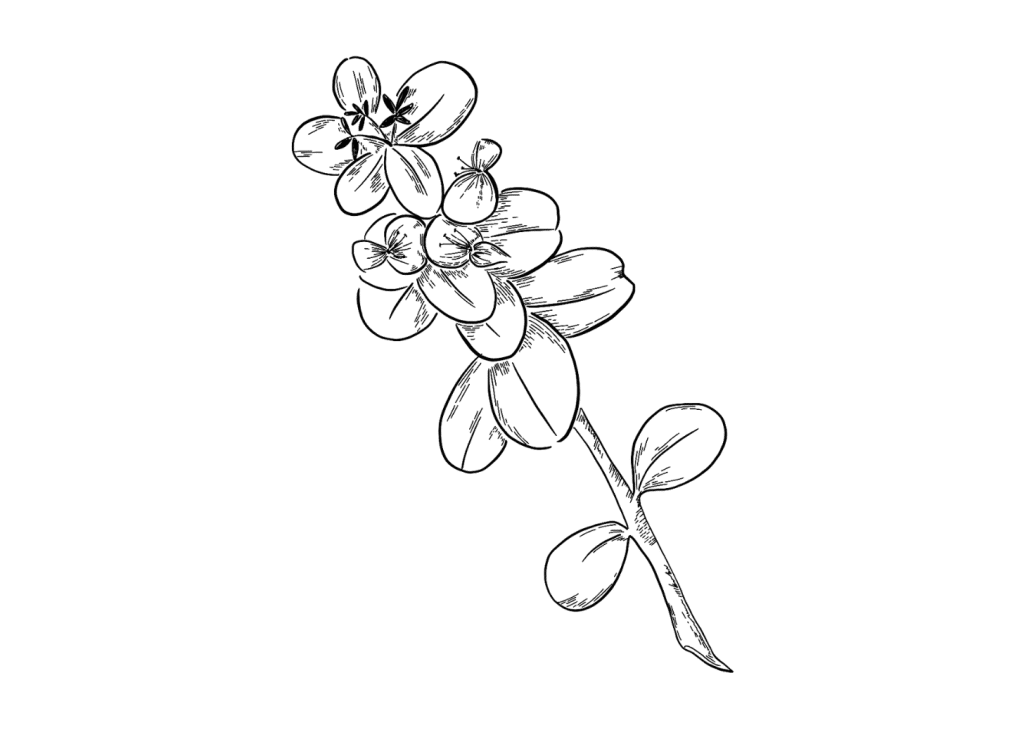
Unsurprisingly, this herb is another DMT-containing member of the Fabaceae (pea) family. The leaves and root bark of the plant contain both N,N,DMT and 5-MeO-DMT (concentrations unknown).
14. Butterfly Bush (Petalostylis cassioides)
The butterfly bush is a native Australian plant with prominent butterfly-shaped flowers. It’s a member of the Fabaceae family that contains around 0.5% tryptamine alkaloids by dried weight in the seeds and leaves.
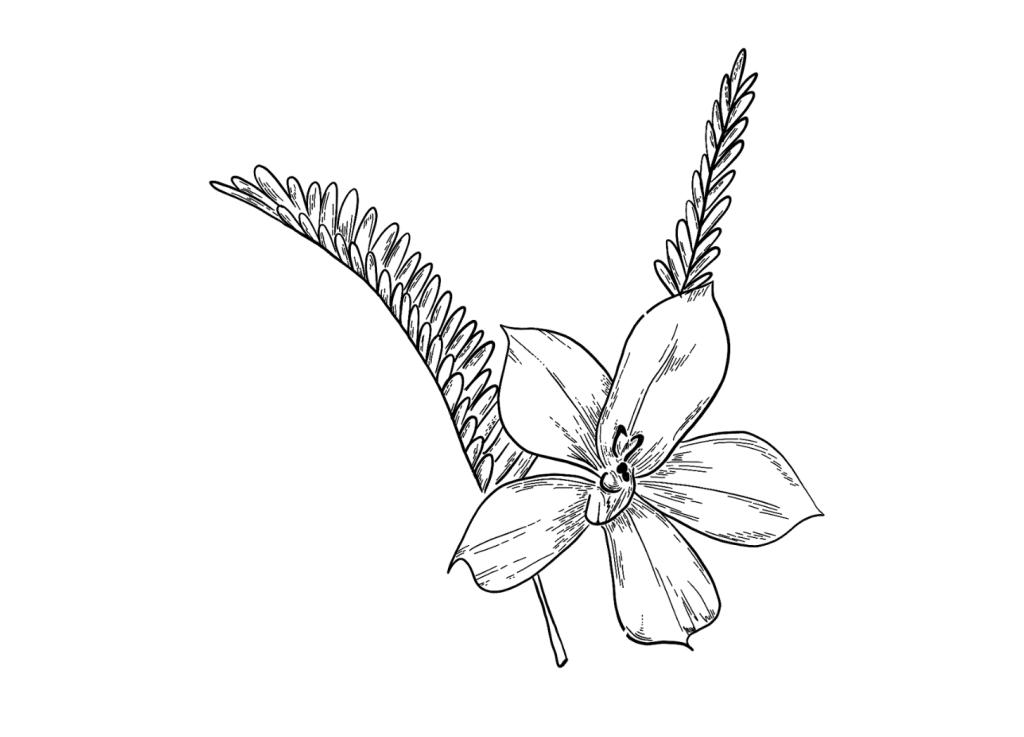
The only study available examining the DMT levels of this plant (from the 1970s) suggests it contains several tryptamine alkaloids, including tryptamine, N,N-dimethyltryptamine, N-methyltryptamine, and tetrahydroharman.
The seeds are reported to have a “tryptamine smell” when crushed open.
15. Velvet Bean (Mucuna pruriens)
Velvet bean is a popular nootropic supplement for its high L-Dopa and 5-HTP concentrations. L-Dopa is a precursor for dopamine and 5 HTP is a precursor for serotonin — two key neurotransmitters in the human brain.
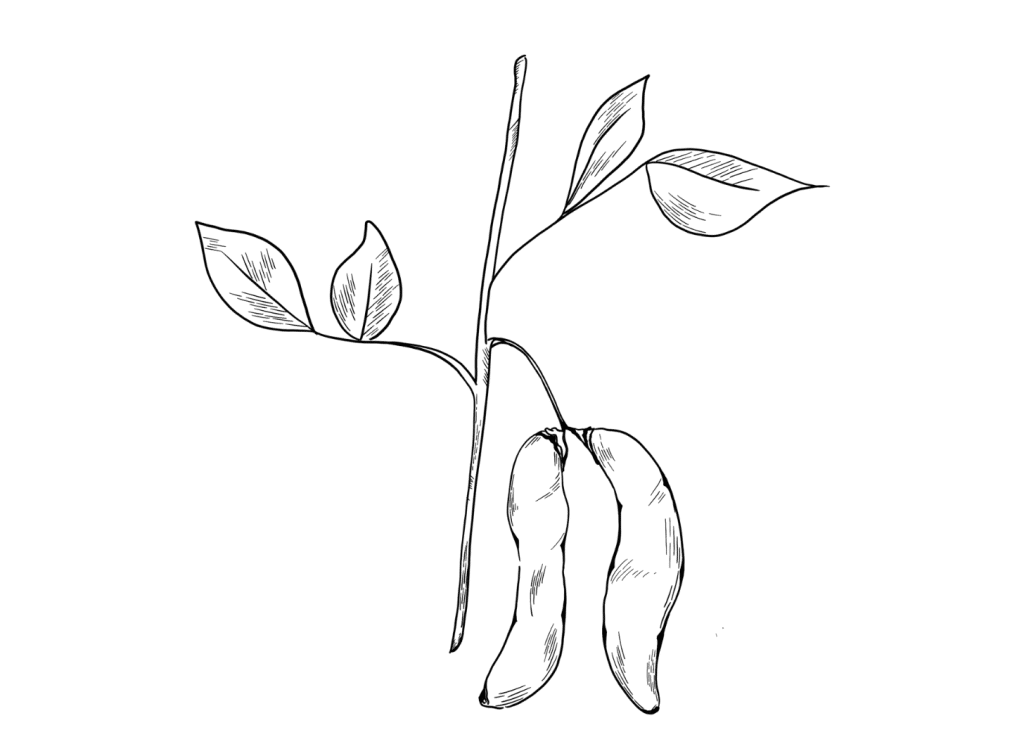
More recently, research has discovered Mucuna pruriens also contains modest amounts of N,N,DMT, bufotenin, 5-MeO-DMT, and nicotine.
There isn’t enough DMT in this plant to be worth using it for extraction. The leaves and seeds contain somewhere in the ballpark of 3 micrograms per gram. This means that for a single 5 mg dose of DMT, you’d need nearly 2 kg of leaves — which simply isn’t practical.
16. Pendarah (Horsfieldia superba)
This plant is a member of the nutmeg family (Myristicaceae) native to Sumatra, Malaysia, and Singapore. It has a long history of use as a herbal medicine for managing chronic pain but is currently listed as critically endangered due to habitat loss in this rapidly developing region of the world.
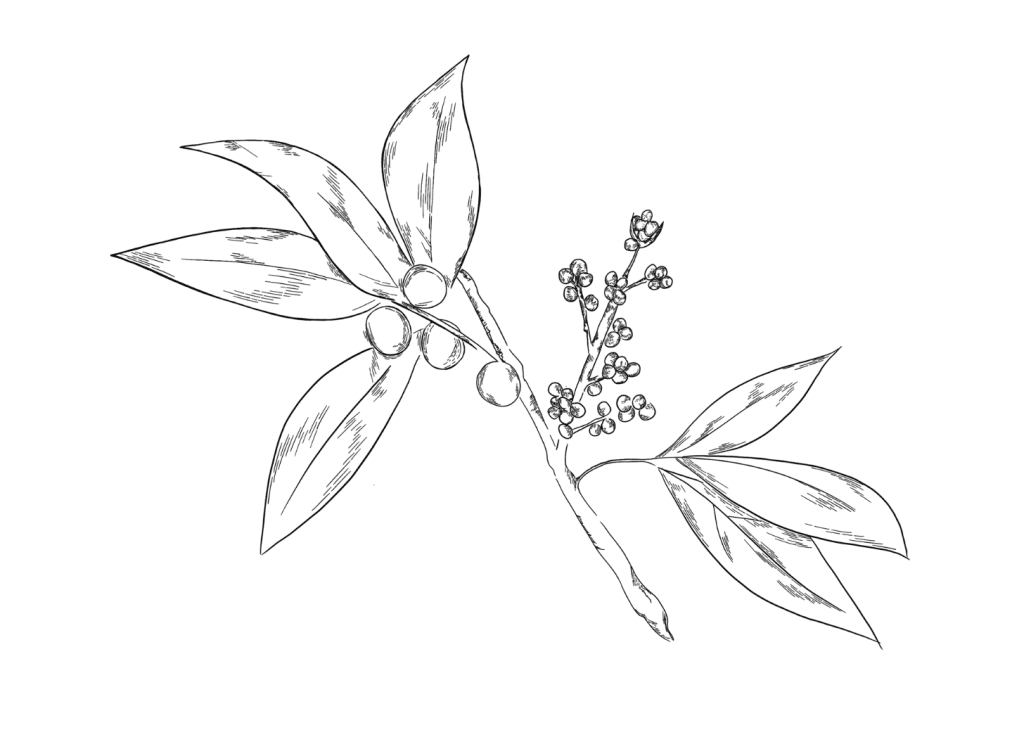
The bark contains 5-MeO-DMT, beta-carboline (an MAO inhibitor), and an alkaloid with analgesic effects called horsfiline.
17. Iryanthera ulei
Iryanthera ulei is a tall tree native to the Amazon rainforest. It’s a member of the Myristicaceae family, which contains several other DMT-containing genera of plants as well — including Virola, Osteophloem, and Horsfieldia.
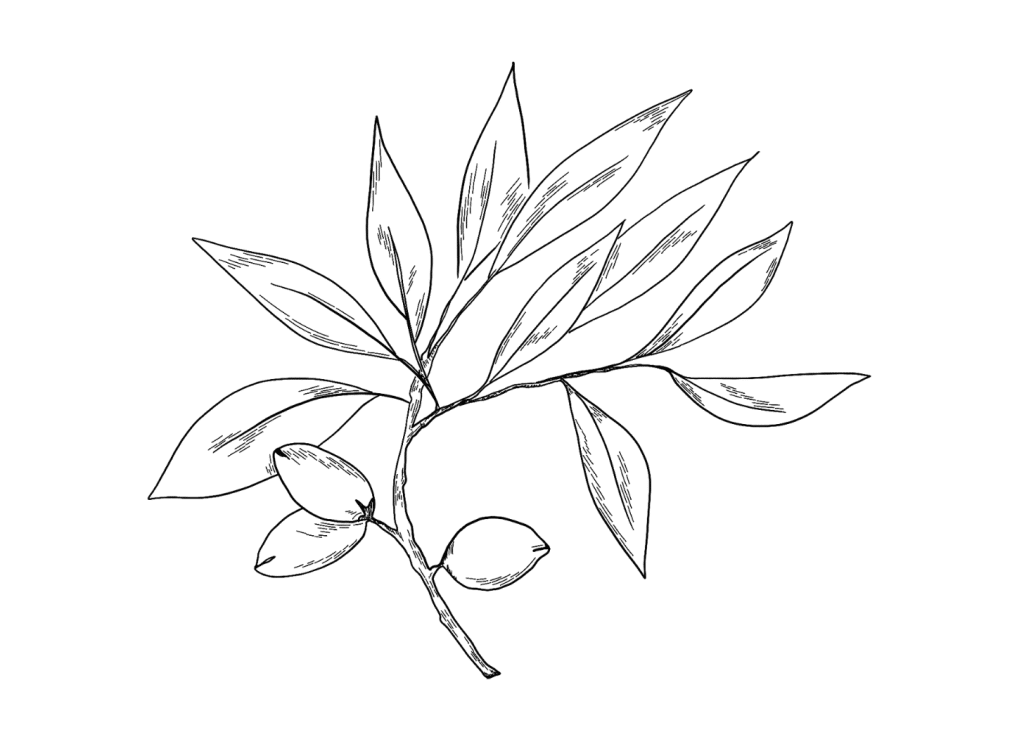
There isn’t much information on this plant or how it’s used. We don’t have any data specifying the specific concentrations of DMT in the plant, but there are reports that it contains both 5-MeO-DMT and N,N,DMT in notable concentrations.
18. Osteophloem platyspermum
Osteophloem platyspermum is the only listed species in the genus. It’s a species of tree found primarily in Panama.
There’s very little information available about this species of plant, and virtually no formal studies. The only data we have available about the DMT concentrations of this plant come from a field study published by Harvard University back in 1980.
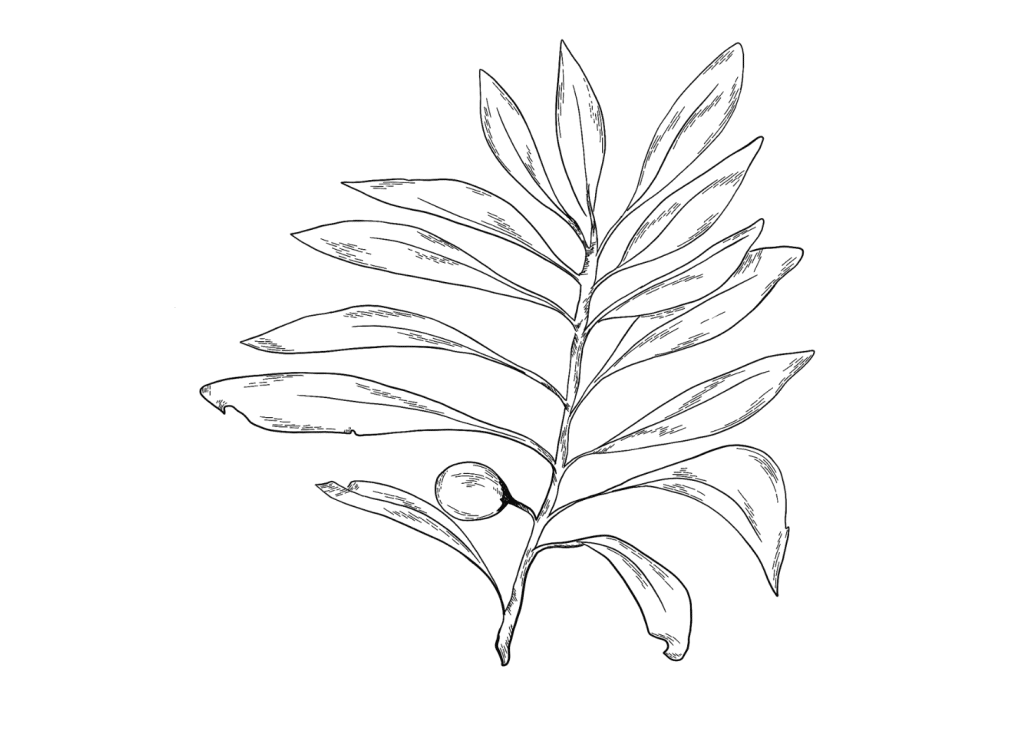
The report suggests Osteophloem platyspermum contains both N,N,DMT and 5-MeO-DMT in unspecified concentrations.
Why Do Plants Contain DMT?
While this is up for debate, the general consensus among scientists is that plants produce DMT to protect themselves from insects and animals.
Several studies have shown that plants containing high concentrations of tryptamine alkaloids (including DMT) are preyed on less often than plants that don’t produce these compounds [4,5,6].
DMT, serotonin, and other tryptamines are toxic to many species of insects and interfere with feeding, reproduction, and immune function. These compounds can also negatively affect mammals that may seek to feed on these plants — especially in high concentrations.

A good example of this is the phalaris staggers that cause grazing animals to lose their ability to coordinate movement after eating large amounts of Phalaris grass.
There are species of sea sponges that produce a type of DMT called 5-Bromo-DMT (Spongebob DMT) as a way to repel barnacles and other mollusks from growing on the surface and clogging the creatures airway.
The Colorado River toad (Bufo alvarius) uses a similar method to avoid being eaten. It secretes a venom on its back that contains high concentrations of 5-MeO-DMT. In this case, the venom uses a few tricks to repel predators. It tastes horrible, it can make animals nauseous for several hours, and the DMT blasts them into DMT hyperspace for about 30 minutes while the toad hops away to safety.
Animals that have eaten DMT-containing plants or animals and survived are unlikely to make the same mistake again.
How to Extract DMT From Plants
The easiest way to obtain DMT short of buying it is to extract it from plants.
The process isn’t overly complex but does require a few steps to first extract the DMT, and then separate it from other elements in the extract.
Most people use either Mimosa hostilis or Viridis psychotria because of their high DMT concentrations and widespread availability. You can order these herbs in bulk online at a good price and use this as the starting point for extracting and later concentrating DMT.
The simplest method for extracting DMT from plants is to use a combination of vinegar, water, sodium hydroxide (lye), and naphtha gas.
The simplified process for extracting DMT from plants is as follows:
- Mix plant material with vinegar and water
- Add sodium hydroxide to increase the pH
- Add naphtha to separate the DMT portion
- Place the solution in the fridge to separate the DMT
- Filter and dry the freebase DMT powder
In order to separate the DMT from the rest of the compounds in the extract, we need to use both polar and nonpolar solvents. The first solvent (polar) pulls the DMT along with a variety of other phytochemicals from the plant material.
Next, naphtha (or another non-polar solvent) is mixed in. The DMT will diffuse from the watery base into the naphtha, which then separates into two layers.
Separate the top layer (the naphtha and DMT layer) and place it in the fridge. The DMT freebase will start to fall out of solution as the liquid cools. You can then filter these white DMT crystals out of the liquid and allow the rest of the naphtha to evaporate.
How to Prepare Changa From Plants
Changa is the smokable form of ayahuasca. It’s made from a combination of ayahuasca vine (or another MAO inhibitor) and a DMT-containing plant.
Changa is no joke — the experience it produces is short-lived but powerful. Never use changa alone, and be conservative with your dose the first couple of times you use it. Have a trip sitter with you while you use it, and avoid combining it with any other drugs or medications.
Learn more about responsible psychedelic use.
Just about any of the plants listed here can be used for changa, but the most common options include:
- Acacia Tree (Acacia obtusifolia or others)
- Chaliponga (Diplopterys cabrerana)
- Chacruna (Psychotria viridis)
- Reed canary grass (Phalaris brachystachys)
- Yopo (Anadenanthera peregrina)
- Cebil (Anadenanthera colubrine)
- Mimosa (Mimosa hostilis)
Flavor enhancers are also used, such as peppermint, lavender, damiana, or blue lotus flower. Mullein, raspberry leaf, or tobacco are sometimes added to reduce the harshness on the back of the throat.
To make changa, simply mix your ingredients together. Here’s a simple recipe to get you started:
- Ayahuasca vine — 2 parts
- Mimosa hostilis — 2 parts
- Mullein — 2 parts
- Peppermint — 1 part
The DMT content is the limiting factor when it comes to changa. You’ll likely need to smoke a fair bit of this herbal mix to feel the effects of DMT. Most people will use concentrated DMT made from one of these plants instead. You can sprinkle about 25% of the total weight of the mixture and stir thoroughly.
Summary: What Plants Are High in DMT?
There’s a surprising number of plants in the wild that produce DMT or related tryptamine alkaloids. Most plants use DMT as a defensive mechanism. Tryptamine alkaloids interfere with the hormone systems of insects that may seek to feed on the plant — causing them to lose the ability to navigate around the plant, reproduce, or eat.
It’s highly likely that many other plants make DMT as well. Most of them just haven’t been tested for it or contain DMT in concentrations too low to be worth exploring further.
There are even animals, insects, and a few species of sea sponges that produce DMT.
So far, the plant with the highest DMT concentration known is Mimosa hostilis, but Mimosa pudica and Psychotria viridis aren’t far behind.
References
- Servillo, L., Giovane, A., Balestrieri, M. L., Cautela, D., & Castaldo, D. (2012). N-Methylated tryptamine derivatives in Citrus genus plants: identification of N, N, N-trimethyltryptamine in bergamot. Journal of agricultural and food chemistry, 60(37), 9512-9518.
- Carbonaro, T. M., & Gatch, M. B. (2016). Neuropharmacology of N, N-dimethyltryptamine. Brain research bulletin, 126, 74-88.
- Ott, J. (2001). Pharmepena-psychonautics: human intranasal, sublingual and oral pharmacology of 5-methoxy-N, N-dimethyl-tryptamine. Journal of psychoactive drugs, 33(4), 403-407.
- Gill, R. I., Ellis, B. E., & Isman, M. B. (2003). Tryptamine-induced resistance in tryptophan decarboxylase transgenic poplar and tobacco plants against their specific herbivores. Journal of chemical ecology, 29(4), 779-793.
- Huang, Q., Li, L., Zheng, M., Chen, F., Long, H., Deng, G., … & Zhang, H. (2018). The tryptophan decarboxylase 1 gene from Aegilops variabilis No. 1 regulate the resistance against cereal cyst nematode by altering the downstream secondary metabolite contents rather than auxin synthesis. Frontiers in plant science, 9, 1297.
- Thomas, J. C., Deanna, C. A., Nessler, C., Brown, J. K., & Bohnert, H. J. (1995). Tryptophan Decarboxylase, Reproduction of the Tryptamine, and Whitefly. Plant Physiology, 109(71), 7-720.

